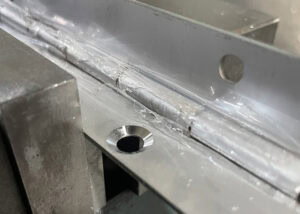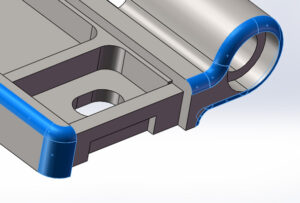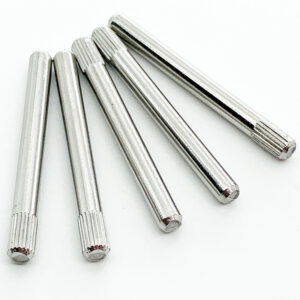In this comprehensive guide, we will delve into the pros and cons of piano hinges, explore their advantages compared to other hinge types, address common questions about their usage, and ultimately help you make informed decisions when choosing and implementing piano hinges in your projects.
The best use of piano hinges is for longer and heavier doors. Especially where stability is required, piano hinges provide even load bearing and stability in every position.
Please read on, I will be presenting more about piano hinges that may help you.
What are the Advantages of Continuous Hinges
Continuous hinges, often referred to as piano hinges, offer numerous advantages that make them highly desirable in various scenarios. Their continuous length allows for even weight distribution along the entire hinge, reducing stress and wear on the hinge and the attached components. This design also results in exceptional strength and durability, making continuous hinges suitable for heavy-duty applications.
Additionally, piano hinges provide a clean and sleek appearance due to their continuous, uninterrupted lines. This aesthetic quality can enhance the overall look of a project, even in non-decorative settings. Moreover, continuous hinges are known for their smooth and frictionless operation, ensuring a long-lasting, reliable performance.
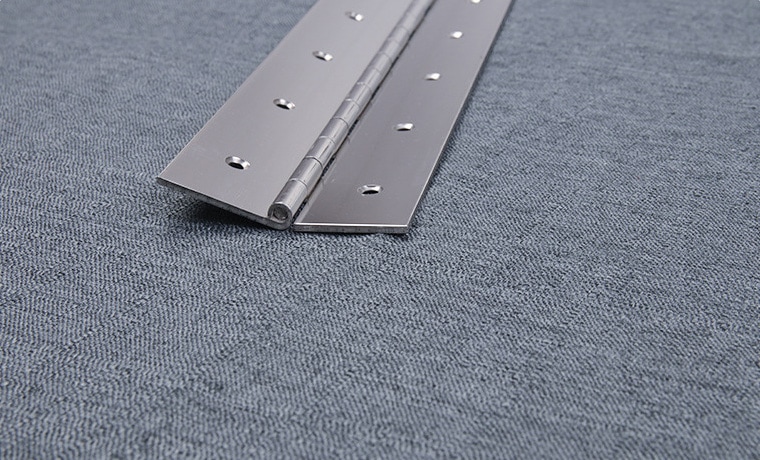
What are the Cons of Piano Hinges?
Piano hinges, like any other hardware, come with their share of drawbacks. One significant drawback is their size. These hinges tend to be relatively long and narrow, making them less suitable for smaller applications where compactness is essential. Additionally, they may not provide the same aesthetic appeal as other hinge types, which can be a crucial factor in certain design contexts. Furthermore, piano hinges can be more challenging to install due to their continuous design, requiring precise alignment and a secure mounting surface.
Can Piano Hinges Be Used on Doors?
Yes, piano hinges can be used on doors, although their application may vary depending on the specific door and its intended purpose. These hinges are commonly found on commercial doors, such as those in industrial buildings and warehouses, where durability and longevity are paramount. Continuous hinges are well-suited for heavy doors and those that require frequent use, as they distribute the weight evenly and reduce the risk of sagging or misalignment over time.
However, for residential doors or doors in more design-oriented environments, other hinge types may be preferred for their aesthetic appeal. It’s crucial to assess the door’s size, weight, and usage requirements when deciding whether piano hinges are the right choice.
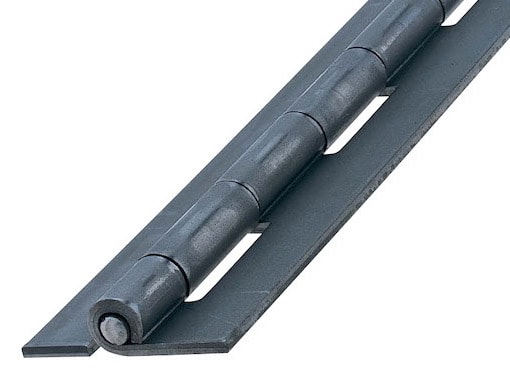
How Do I Choose a Piano Hinge?
Choosing the right piano hinge involves considering several critical factors to ensure it meets your specific needs. Here are some essential aspects to keep in mind:
- Material: Piano hinges are available in various materials, including stainless steel, steel, and aluminum. The choice of material should depend on factors like corrosion resistance and the application’s environmental conditions.
- Size: Determine the length and width of the hinge needed for your project. Measure the door or panel carefully to ensure a proper fit.
- Weight Capacity: Consider the weight of the door or panel the hinge will support. Continuous hinges come in various weight capacities, so select one that matches your requirements.
- Mounting Method: Decide whether you need a surface-mounted or mortise-mounted hinge, depending on the door or panel’s design.
- Durability: Assess the expected frequency of use and the environment in which the hinge will operate. Choose a hinge with the appropriate durability rating for your application.
- Aesthetic Considerations: While piano hinges are known for their sleek appearance, you may want to consider other hinge styles if aesthetics are a significant concern.
What is a Common Problem With Hinges?
One common issue that can arise with hinges, including piano hinges, is misalignment. Misalignment can occur due to several reasons, such as improper installation, wear and tear, or structural changes in the attached components. To prevent or address misalignment, it’s essential to follow proper installation guidelines, regularly inspect the hinge for signs of wear, and make necessary adjustments or replacements as needed.
Another common problem is hinge corrosion, especially in outdoor or high-moisture environments. To combat corrosion, choose a hinge material with suitable corrosion resistance properties, and apply protective coatings or lubricants as recommended by the manufacturer. Regular maintenance can significantly extend the life of your hinges.
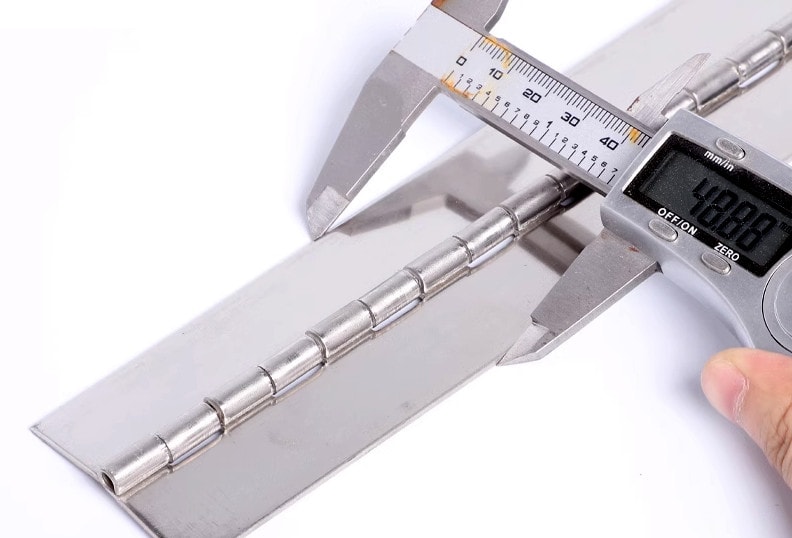
Evaluating the Strength of Hinge Designs
When it comes to strength, the design of a hinge plays a crucial role. Continuous hinges, including piano hinges, are known for their robustness due to their full-length construction. This design evenly distributes the load and minimizes stress concentration points, making them suitable for heavy-duty applications.
However, it’s essential to select the right continuous hinge with the appropriate weight capacity for your specific needs. Manufacturers provide load ratings for their hinges, allowing you to match the hinge’s strength to the requirements of your project.
What is the Difference Between a Piano Hinge and a Continuous Hinge?
In practical terms, there is no difference between a piano hinge and a continuous hinge. These terms are often used interchangeably in the industry. Both refer to the same type of hinge characterized by its continuous, elongated design. Whether you call it a piano hinge or a continuous hinge, the essential features and benefits remain the same.
Which Hinges Have the Longest Life?
The longevity of hinges depends on various factors, including the quality of the hinge, the materials used, and the conditions in which it operates. Continuous hinges, such as piano hinges, are known for their durability and long service life, especially when used in the appropriate applications.
Stainless steel piano hinges, for example, offer excellent corrosion resistance and can withstand harsh environments, ensuring a longer lifespan. Regular maintenance and proper installation also contribute to extending the hinge’s longevity.
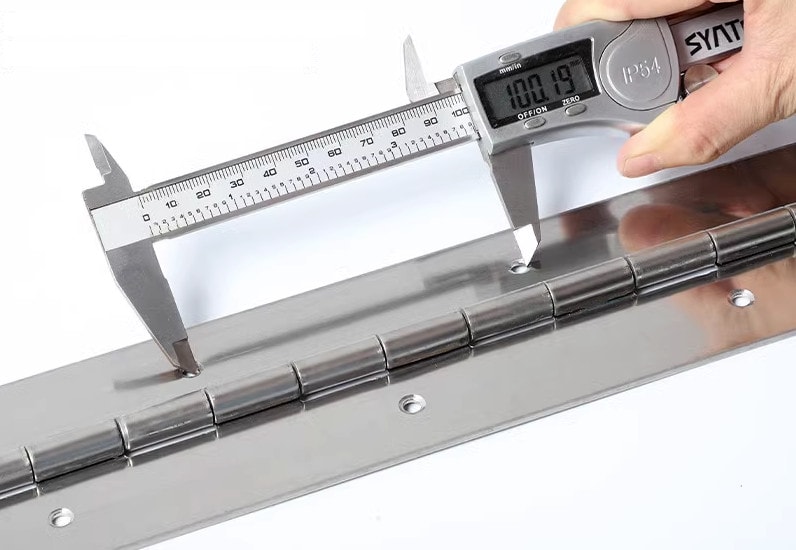
Maximum Opening Angle of a Piano Hinge
The maximum opening angle of a piano hinge depends on its design and size. Continuous hinges typically allow for a 180-degree opening angle, which means they can rotate a full half-circle. This wide range of motion makes them suitable for various applications, such as folding tables, lids, or doors that need to swing completely open.
However, it’s essential to select a hinge that matches your specific angle requirements, as not all continuous hinges have the same range of motion. Additionally, factors like the hinge’s length and the size of the attached components can influence the maximum opening angle.
What are The Properties of a Piano Hinge?
Piano hinges, or continuous hinges, share several key properties and characteristics that make them distinct from other hinge types:
- Continuous Length: As the name suggests, these hinges are characterized by their uninterrupted, continuous length, which provides even weight distribution and strength.
- Slim Profile: Piano hinges have a slim and sleek profile, making them suitable for applications where aesthetics and space-saving are important.
- Smooth Operation: Due to their design, continuous hinges offer smooth and frictionless operation, minimizing wear and tear over time.
- Versatility: They are versatile and can be used in a wide range of applications, from industrial machinery to aerospace.
- Durable Materials: Continuous hinges are typically made from durable materials like stainless steel, ensuring longevity and corrosion resistance.
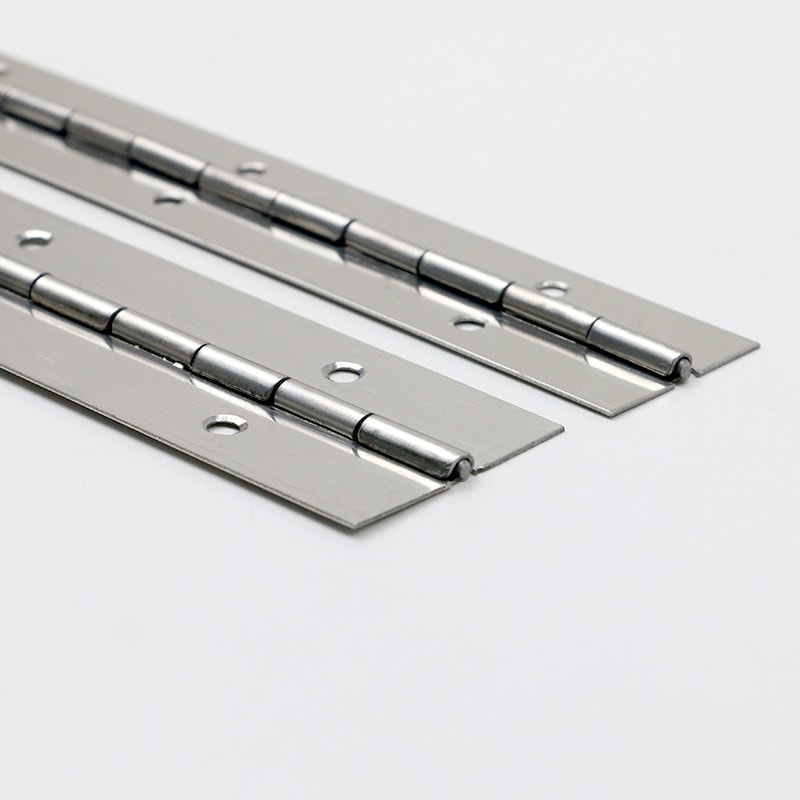
Which Hinge is Better?
The choice between hinge types depends on the specific requirements of your project. While piano hinges, or continuous hinges, have their advantages, it’s essential to consider how they stack up against other hinge varieties.
For instance, butt hinges are a popular choice for doors and cabinets due to their compact size and straightforward installation. They are ideal for applications where the hinge’s appearance is less critical, and space is limited.
Concealed hinges, on the other hand, are known for their hidden installation, making them perfect for furniture and cabinets where a clean, minimalist look is desired. They offer adjustability for precise door alignment.
Which Hinge Should I Use?
Selecting the best hinge for your project depends on various factors, including the type of application, the weight and size of the door or panel, aesthetic considerations, and budget constraints. Here are some key points to help you make an informed decision:
- For heavy-duty applications, where strength and durability are paramount, continuous hinges like piano hinges are an excellent choice.
- If aesthetics play a crucial role, concealed hinges or decorative hinges may be more suitable.
- Consider the door or panel’s size and weight when selecting a hinge to ensure it can support the load effectively.
- Evaluate the environmental conditions, as certain hinges, like piano hinges made of stainless steel, offer superior corrosion resistance for outdoor use.
- Don’t forget to factor in installation requirements and any adjustability needed for precise door alignment.
Can Hinges Rust?
Yes, hinges can rust, especially if they are exposed to moisture or corrosive environments. Rust formation is more common in hinges made of materials like steel or iron that are not inherently corrosion-resistant. To prevent rust, consider using hinges made of materials with better corrosion resistance properties, such as stainless steel or brass. Regular maintenance, including cleaning and lubrication, can also help protect hinges from rust and extend their lifespan.
In conclusion, piano hinges, or continuous hinges, offer a plethora of benefits, making them valuable hardware components in a wide range of industries. Their strength, durability, and versatility make them suitable for heavy-duty applications, while their sleek design can enhance the aesthetics of various projects. By considering the factors discussed in this guide, you can make an informed decision when selecting and using piano hinges in your projects.
You might also be interested:

